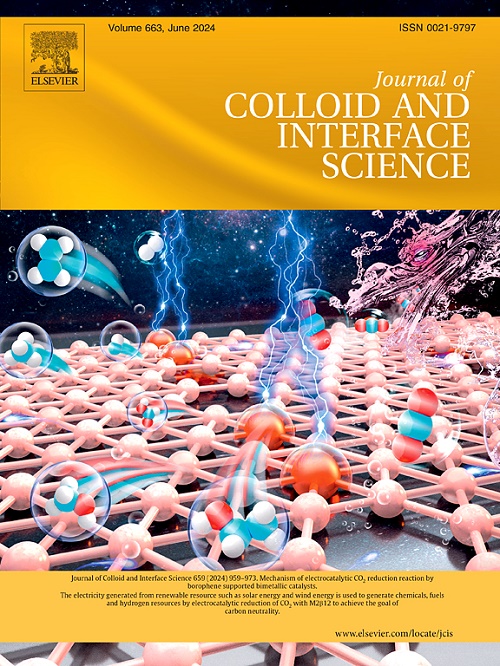Non-Flammable fluorinated gel polymer electrolyte for safe lithium metal batteries in harsh environments
IF 9.7
1区 化学
Q1 CHEMISTRY, PHYSICAL
引用次数: 0
Abstract
Compared to liquid electrolytes, gel polymer electrolytes (GPEs) offer enhanced safety and represent an up-and-coming option for high-energy–density lithium metal batteries (LMBs). However, several challenges hindered the practical application of GPEs for LMBs, such as low ionic conductivity at room temperature, decomposition at high voltage, and poor interfacial compatibility with lithium anode. In this study, a non-flammable fluorinated GPE was synthesized using 2,2,2-trifluoroethyl acrylate (TFEA) and ethoxylated trimethylolpropane triacrylate (ETPTA) as precursor materials, with succinonitrile (SN) incorporated as a plasticizer and a dual-salt system of lithium bis(trifluoro-methane) sulfonimide and lithium difluoroxalate borate. Notably, the as-prepared GPE exhibits a high ionic conductivity of 1.33 mS cm−1 at 30 °C, an electrochemical stability window of 5.15 V (vs. Li+/Li), and excellent interfacial compatibility with the high-nickel LiNi0.93Co0.035Mn0.035O2 (NCM-93) cathode and lithium metal anode. Consequently, the Li|NCM-93 cells demonstrated outstanding cycling stability at a cutoff voltage of 4.3 V at room temperature as well as exceptional safety performances under high-temperature conditions and intense radiation conditions. Furthermore, the fluorinated GPE effectively suppresses the gas generation from high-nickel cathode materials and inhibits the growth of lithium dendrites on the anode. This work offers a novel avenue for developing safe and high-voltage solid-state LMBs for working in harsh environments.

不易燃的氟凝胶聚合物电解液,用于在恶劣环境中安全使用锂金属电池。
与液体电解质相比,凝胶聚合物电解质(gpe)具有更高的安全性,是高能量密度锂金属电池(lmb)的一个新兴选择。然而,一些挑战阻碍了gpe在lmb上的实际应用,例如室温下离子电导率低,高压下分解,以及与锂阳极的界面相容性差。本研究以2,2,2-三氟丙烯酸乙酯(TFEA)和乙氧基化三甲基丙烷三丙烯酸酯(ETPTA)为前驱体,丁二腈(SN)为增塑剂,以双(三氟甲烷)磺酰亚胺锂和二氟草酸锂硼酸盐为双盐体系,合成了不可燃的氟化GPE。值得注意的是,制备的GPE在30°C时具有1.33 mS cm-1的高离子电导率,5.15 V (vs. Li+/Li)的电化学稳定窗口,与高镍LiNi0.93Co0.035Mn0.035O2 (NCM-93)阴极和锂金属阳极具有良好的界面相容性。因此,Li|NCM-93电池在室温下具有出色的4.3 V截止电压循环稳定性,在高温和强辐射条件下具有出色的安全性能。此外,氟化GPE有效抑制了高镍正极材料产生的气体,抑制了阳极上锂枝晶的生长。这项工作为开发在恶劣环境下工作的安全高压固态lmb提供了一条新的途径。
本文章由计算机程序翻译,如有差异,请以英文原文为准。
求助全文
约1分钟内获得全文
求助全文
来源期刊
CiteScore
16.10
自引率
7.10%
发文量
2568
审稿时长
2 months
期刊介绍:
The Journal of Colloid and Interface Science publishes original research findings on the fundamental principles of colloid and interface science, as well as innovative applications in various fields. The criteria for publication include impact, quality, novelty, and originality.
Emphasis:
The journal emphasizes fundamental scientific innovation within the following categories:
A.Colloidal Materials and Nanomaterials
B.Soft Colloidal and Self-Assembly Systems
C.Adsorption, Catalysis, and Electrochemistry
D.Interfacial Processes, Capillarity, and Wetting
E.Biomaterials and Nanomedicine
F.Energy Conversion and Storage, and Environmental Technologies

 求助内容:
求助内容: 应助结果提醒方式:
应助结果提醒方式:


